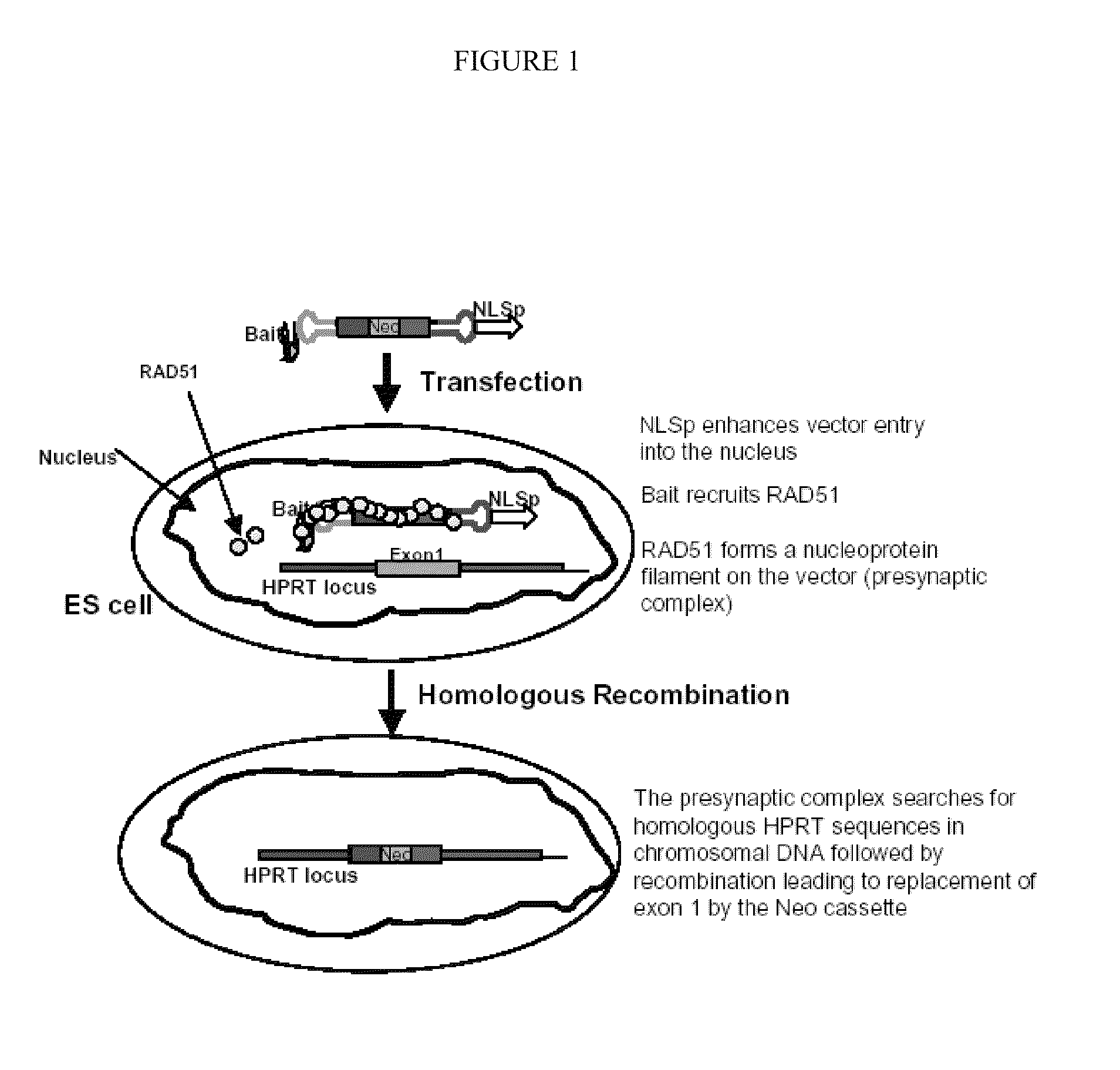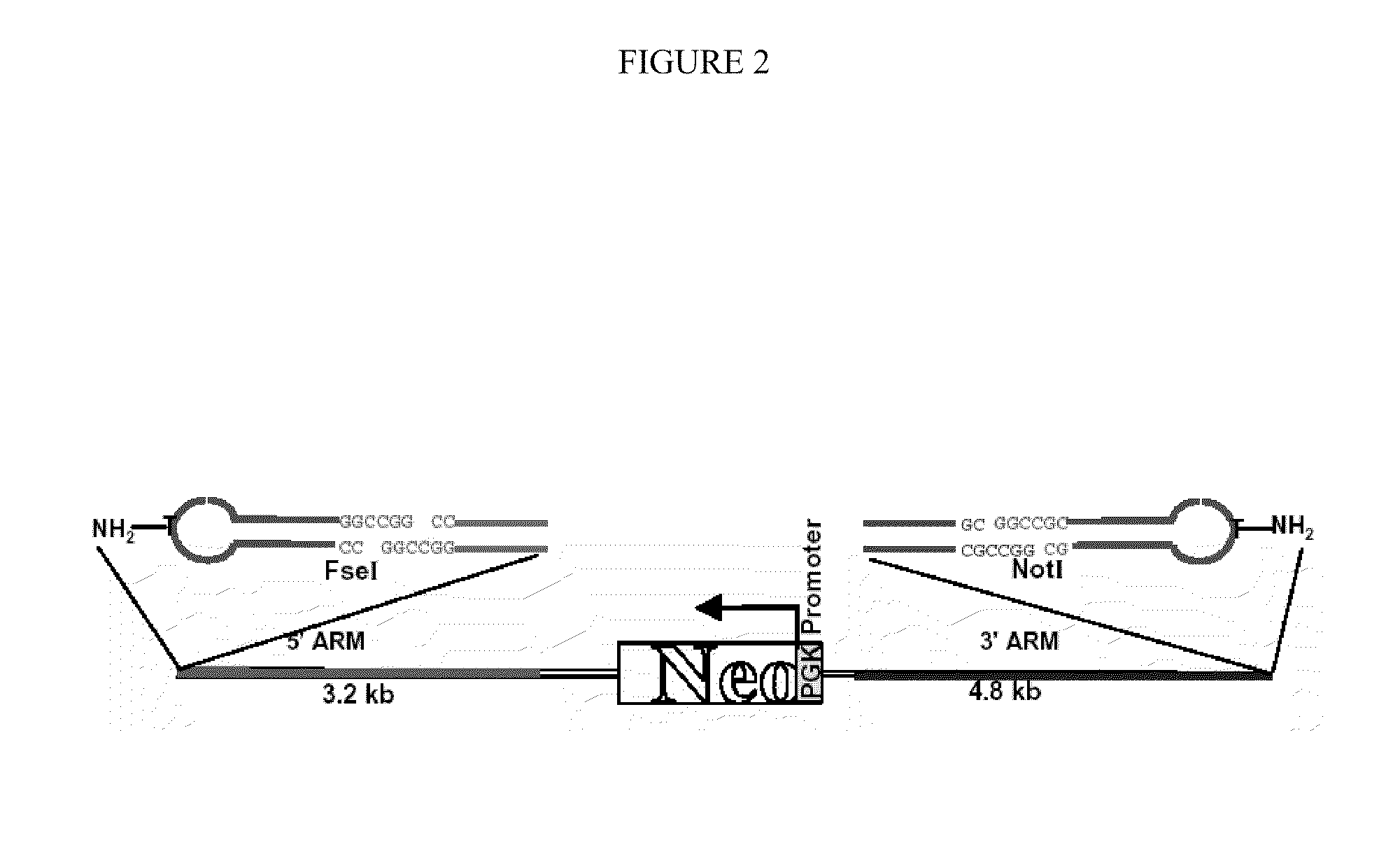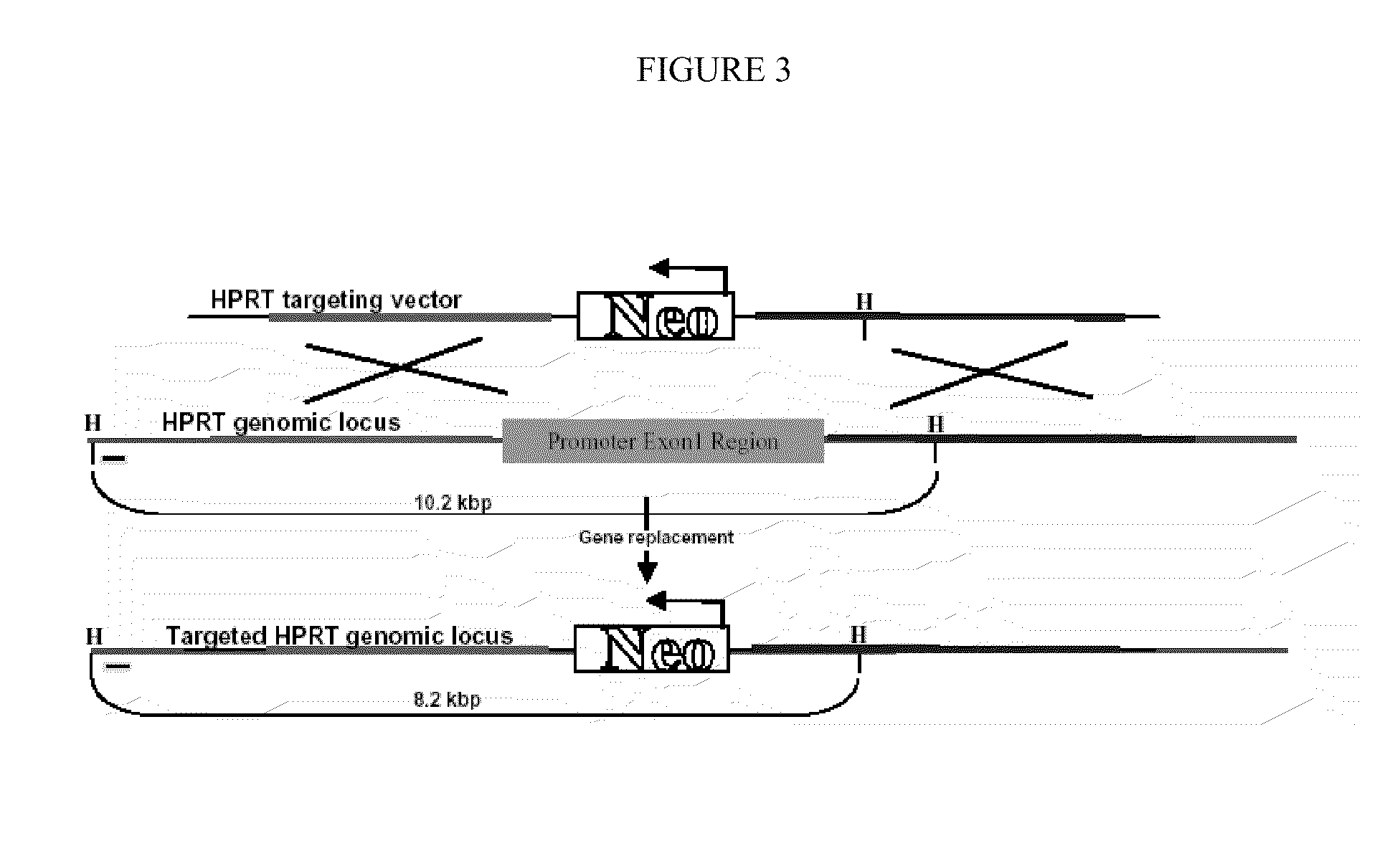Methods and systems for high homologous recombination ("HR") targeting efficiency
a technology of homologous recombination and targeting efficiency, applied in the field of genetic engineering methods and systems, can solve the problems that certain mouse models are difficult to make by currently available gene targeting methodologies, and achieve the effect of high homologous recombination, relative ease of use, and high homologous recombination efficiency
- Summary
- Abstract
- Description
- Claims
- Application Information
AI Technical Summary
Benefits of technology
Problems solved by technology
Method used
Image
Examples
example 1
Targeting Vectors
[0083]Modified targeting vectors contain hairpin oligonucleotides on each end with or without attached peptides. Briefly, hairpin oligonucleotides are made with a central T nucleotide containing an alkyamino group to which peptides are attached by a chemical method. The peptide NLSp was made with a C terminal cysteine. The amino group in the hairpin region is linked to the peptide containing a C terminal cysteine by a heterobifunctional cross linker. Before ligation, the hairpin structure of the oligonucleotide presenting a 5′ sticky end was obtained by boiling and cooling on ice. The hairpin was ligated to the ends of the vector containing the corresponding sticky ends of the restriction site (FIG. 2). The reason for blocking the linear ends of the vector with hairpin oligonucleotides is to prevent the linear plasmid from forming concatemeric structures which will lead to spurious modification at the targeting locus. Additionally, blocking ends of a targeting vecto...
example 2
Targeting Vectors with a Nuclear Localization Signal
[0090]Mouse ES cells are used for targeting experiments. The reason for using murine ES cells as a model in this example to improve homologous recombination (“HR”) targeting is that any improvement in targeting efficiency in ES cells is expected to lead to increased ease in creation of myriad animal models of disease. One of the priority settings of the National Human Genome Research Institute is the “knockout mouse project” (NIH Planning Meeting for Knockout Mouse Project, May 24-25, 2006).
[0091]In this example, HR frequencies of a control targeting vector are compared to each of three different “bait” vectors that contain peptides, which bind to RAD51 (see FIG. 5). The control vector contained hairpin oligonucleotides at each end of the linear DNA molecule so as to block exonucleolytic attack. To enhance trafficking of the vector into the nucleus, a peptide with a nuclear localization signal is covalently attached to one of the h...
example 3
Targeting Vector
[0093]A detailed description of HPRT vector construction is presented in Example 1. Briefly, a plasmid substrate containing a 5′ homologous arm flanking the HPRT promoter region and a 3′ homologous arm flanking exon 1 of the HPRT gene has been constructed (FIG. 2). The homologous arms bracket a neomycin resistance gene driven by the PGK1 promoter, which allows the constitutive expression of the Neor gene. The vector backbone contains unique restriction enzyme sites so that the ends of the targeting molecule can be ligated with hairpin oligonucleotides containing sequences complementary to the overhanging ends at the restriction sites. As described below, the various peptides are first covalently attached to the hairpin oligonucleotides before ligation of the hairpins onto the ends of the targeting vectors.
[0094]
TABLE 2Bait peptides for targeting experiments1Name2Amino acid (residues)sequenceLengthBRC3SEQ ID NO. 169(1391-ERNIKEFNIS FQTASGKNTR 1458)...
PUM
| Property | Measurement | Unit |
|---|---|---|
| volume | aaaaa | aaaaa |
| selective pressure | aaaaa | aaaaa |
| neomycin resistance | aaaaa | aaaaa |
Abstract
Description
Claims
Application Information
 Login to View More
Login to View More - R&D
- Intellectual Property
- Life Sciences
- Materials
- Tech Scout
- Unparalleled Data Quality
- Higher Quality Content
- 60% Fewer Hallucinations
Browse by: Latest US Patents, China's latest patents, Technical Efficacy Thesaurus, Application Domain, Technology Topic, Popular Technical Reports.
© 2025 PatSnap. All rights reserved.Legal|Privacy policy|Modern Slavery Act Transparency Statement|Sitemap|About US| Contact US: help@patsnap.com



